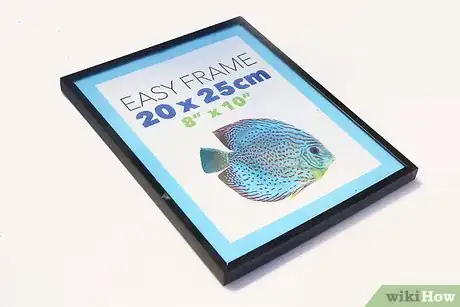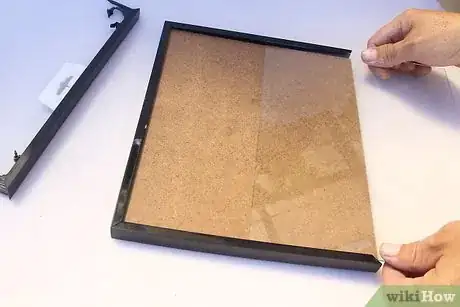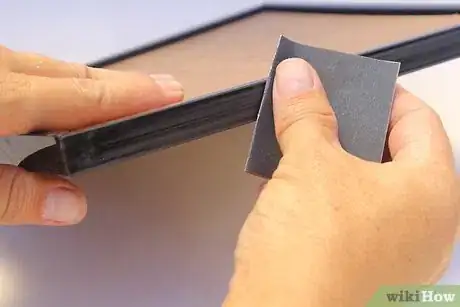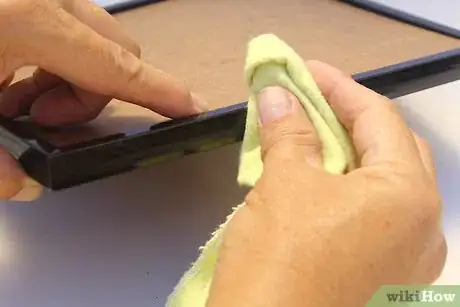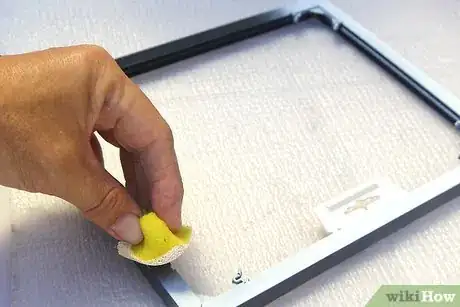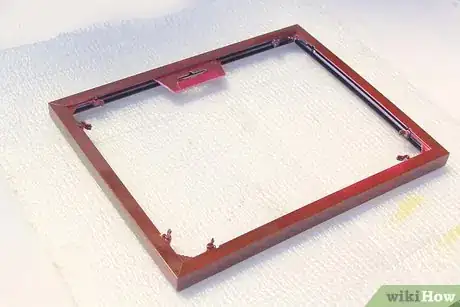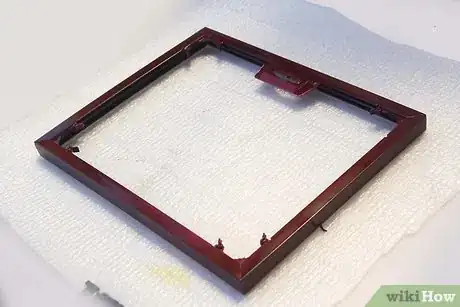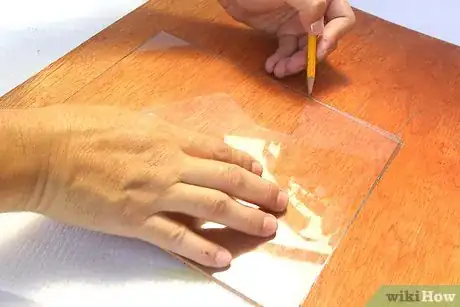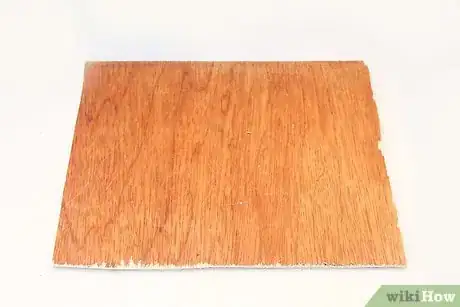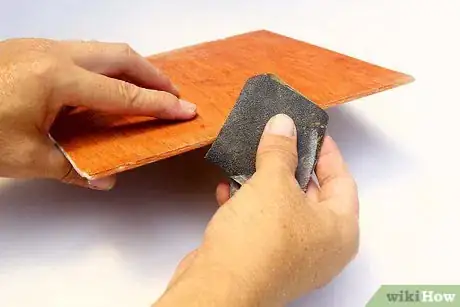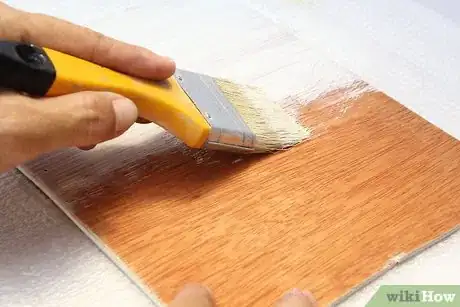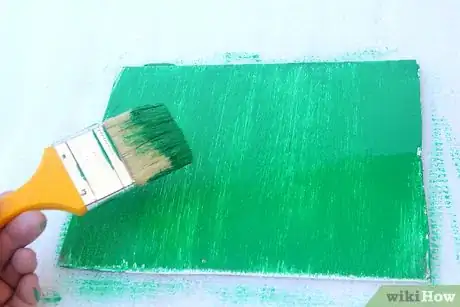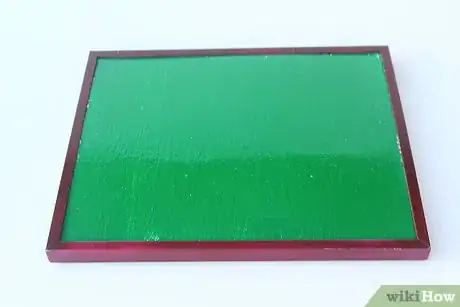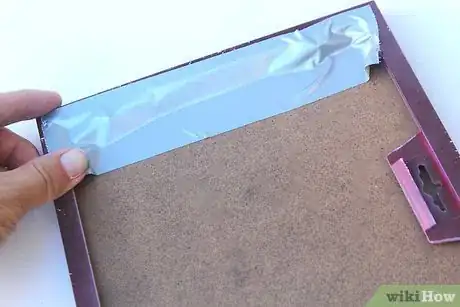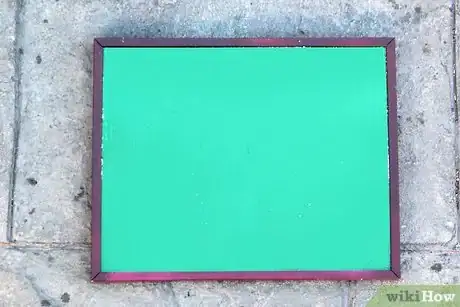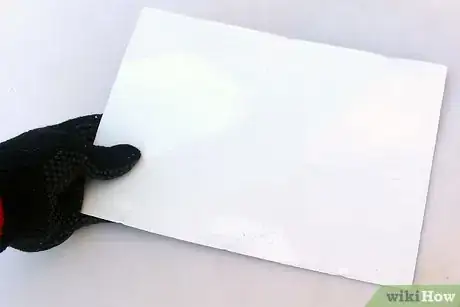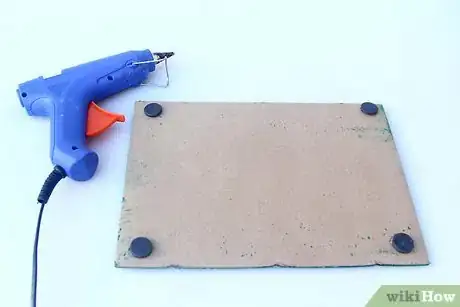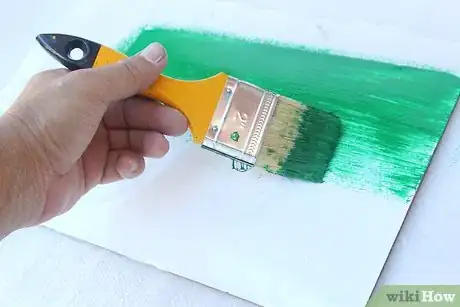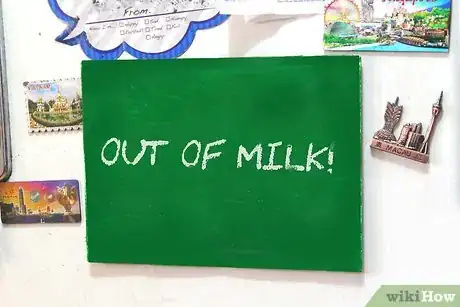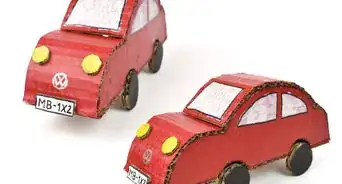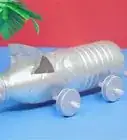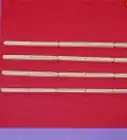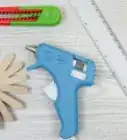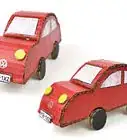This article was co-authored by wikiHow staff writer, Amber Crain. Amber Crain has been a member of wikiHow’s writing staff for the last six years. She graduated from the University of Houston where she majored in Classical Studies and minored in Painting. Before coming to wikiHow, she worked in a variety of industries including marketing, education, and music journalism. She's been a radio DJ for 10+ years and currently DJs a biweekly music program on the award-winning internet radio station DKFM. Her work at wikiHow supports her lifelong passion for learning and her belief that knowledge belongs to anyone who desires to seek it.
This article has been viewed 263,914 times.
Learn more...
Making a chalkboard is a fairly simple craft project! All you need is a picture frame, a piece of plywood or medium-density fiberboard, special chalkboard paint, and a few other basic supplies. You can also try your hand at creating variations, like a magnetic chalkboard, or using the special chalkboard paint on other flat surfaces. Making a chalkboard is an enjoyable way to spend the afternoon, and children make great helpers for this project. Once the paint is fully dry, your board is ready for chalk!
Steps
Choosing and Preparing the Frame
-
1Choose a picture frame based on your desired chalkboard size. You can repurpose an old frame, pick something up at a second-hand shop, or buy something new for this project. The size of the frame will be the finished size of your chalkboard.[1]
- When selecting a frame, choose one that still has its backing. The backing isn't necessary, but it will help you secure the chalkboard later.
- You can also use a framed mirror, as long as you can pop the mirror out.[2]
-
2Take the glass or plexiglass out of the frame. It should slide right out. You will not be using the glass for this project, but if you enjoy crafting, you might want to save it among your crafting supplies for a future project.[3]
- If you dispose of the glass, take precautions to ensure that it doesn't hurt anyone. You can either recycle it or throw it away, but if you throw it away, wrap it in several layers of cloth rag or plastic bag first.
Advertisement -
3Sand the frame down. If the frame is in ragged condition, lightly sand it down with fine-grain sandpaper. Temporarily remove the backing to prevent it from getting dirty or damaged as you sand.
-
4Wipe down the frame. After sanding the frame, wipe away particles and other dirt with a clean, dry cloth. Even if you do not need to sand the frame, you should still wipe it down with a clean cloth to rid it of dust and dirt.
-
5Apply a coat of primer to the frame if you plan to paint it. Use a sponge brush to apply a coat of white primer over the wooden frame. If you don't plan on painting your frame or just want to paint a fresh coat of the same color, primer isn't necessary. Primer is essential if you plan on painting the frame a light color, especially if a dark color lies beneath it.
- Lay out newspaper or plastic sheeting first to protect your surfaces.
- Let the primer dry before moving on to paint application.
-
6Paint the frame as desired. Use a sponge brush or traditional paintbrush to apply several coats of paint in your desired color. Apply the paint with the grain, not against it. You can also use spray paint for faster, easier application.
- Allow the paint to dry in between coats. Aim for 2-3 coats for full and even coverage.
-
7Stain a wooden frame, alternatively. You could apply wood staining, too, as long as the frame is made with natural wood. Do not prime the wood before staining it and use a soft bristle paintbrush to apply it. Apply the stain with the grain, not across it.
- Allow the stain to dry in between coats.
Applying Chalkboard Paint to the Board
-
1Trace a rectangle onto medium-density fiberboard. The rectangle must be the same size as the opening of the frame. If the frame is new, take out the paper insert that comes with it and trace the outline onto your board. You can also trace the inside glass window. Draw the outline on the board using a pencil.[4]
- If you have an old frame with no glass, use a ruler to measure the back opening of the frame. Draw a rectangle with the same dimensions on your board. Do not use the dimensions from the front opening of your frame.
- Plywood also works if you don't have medium-density fiberboard.
-
2Cut the board along your traced lines. Use an electric jigsaw or manual hand saw to cut along the outline you traced. If you are unable to do the work yourself, bring the dimensions to the hardware store and ask a worker in the lumber section to trim the board down for you.[5]
-
3Smooth out the edges with sandpaper. After cutting the board, use rough sandpaper to remove any splintering edges around the perimeter. You may also need to use the sandpaper to shave away some of the board if it will not fit into the frame perfectly.
-
4Apply one coat of white latex primer to one side of the board. Use a large sponge brush or standard flat painter's brush to brush on a coat of primer. Let the primer dry completely before applying the chalkboard paint.[6]
- The primer will make it easier for the paint to stick to the surface of the board.
-
5Paint the board with two coats of chalkboard paint. Use a painter's brush or roller to apply two even coats of black chalkboard paint to the primed board. Even coats will reduce the amount of ridges that develop on the surface after the paint dries.[7]
- Allow the paint to dry completely between coats.
- Chalkboard paint is formulated to develop the surface texture of a chalkboard upon drying. It can then be written on with chalk. Applying two coats will make the effect stronger.
-
6Fit the chalkboard into the back of the frame. Insert it with the chalkboard side facing the front. It should slide right in, similar to if you were replacing the glass in the frame.[8]
-
7Secure the chalkboard in place. If the backing will fit inside the frame with the board, slide it behind the board to secure everything in place. If you cannot use the backing, use masking tape or packing tape to fix the back of the board to the back of the frame.[9]
-
8Hang the chalkboard by the hook attached to the frame's backing. Alternatively, you could use heavy staples to attach thick twine or thin rope to the top two corners of the frame and hang the chalkboard on a hook using this string.
Creating Variations
-
1Create a magnetic chalkboard with metal sheeting instead of plywood. Trim a thin sheet of galvanized sheet metal down to size using tin snips. The metal should be the same size as your plywood would be if creating an ordinary chalkboard. Coat the metal with several layers of chalkboard spray paint.[10]
- Wear gloves when handling the metal to avoid getting cut.
- Use the backing of the frame or another piece of board to secure the sheet metal in place.
-
2Glue magnets on the back if you want to hang your board on the fridge. If you plan to hang your framed chalkboard on a magnetic surface, like your fridge, fix moderately strong magnets to the four corners of the frame. Use super glue or another strong adhesive to secure the magnets in place.
-
3Apply chalkboard paint on other flat surfaces. Any flat, smooth surface can be turned into a blackboard simply by adding a few layers of chalkboard paint. Lightly sand the surface, if necessary, and apply painter's tape to cover any area you do not want to get paint on.[11]
- Consider using enamel bakeware, old cabinet doors, an old mirror, a glass window pane, or a dustpan.
-
4Make a lightweight chalkboard with foam board. Use foam board instead of plywood or medium-density fiberboard. Cut it out as usual and paint it with two coats of chalkboard paint.[12]
- Note that this will not be a very durable chalkboard. It is best to use this method only if you plan on using the chalkboard infrequently.
Community Q&A
-
QuestionCan you paint a mirror with chalkboard paint?
 Community AnswerThe chalkboard paint probably won't adhere well to that surface, but you can certainly give it a try!
Community AnswerThe chalkboard paint probably won't adhere well to that surface, but you can certainly give it a try! -
QuestionWhere can I find chalkboard paint?
 Alcyone RainbowCommunity AnswerMost hardware stores, such as Home Depot or Lowe's, carry chalkboard paint. You can also find it online, or at some hobby stores such as Michael's or Hobby Lobby.
Alcyone RainbowCommunity AnswerMost hardware stores, such as Home Depot or Lowe's, carry chalkboard paint. You can also find it online, or at some hobby stores such as Michael's or Hobby Lobby. -
QuestionCan’t you also just use a dry erase maker on the glass?
 Corinne SimmonsCommunity AnswerYou can use a dry erase marker on glass! Sometimes, it may be a little stubborn coming off, but you can use a wet wipe to get it off.
Corinne SimmonsCommunity AnswerYou can use a dry erase marker on glass! Sometimes, it may be a little stubborn coming off, but you can use a wet wipe to get it off.
Things You'll Need
- Wooden picture frame
- Sandpaper
- Primer
- Paint or wood staining
- Chalkboard paint
- Sponge brush or flat painter's brush
- Newspaper or plastic sheets
- Medium-density fiberboard or plywood
- Jigsaw or hand saw
- Tape
- Heavy staples
- Twine
- Sheet metal
- Magnets
- Superglue
- Foam board
References
- ↑ http://builtbykids.com/how-to-make-a-chalkboard-with-paint-and-a-picture-frame/
- ↑ https://www.homestoriesatoz.com/decorating/how-to-make-an-easy-vintage-frame-chalkboard-black-chalkboard.html
- ↑ http://builtbykids.com/how-to-make-a-chalkboard-with-paint-and-a-picture-frame/
- ↑ http://builtbykids.com/how-to-make-a-chalkboard-with-paint-and-a-picture-frame/
- ↑ http://builtbykids.com/how-to-make-a-chalkboard-with-paint-and-a-picture-frame/
- ↑ http://builtbykids.com/how-to-make-a-chalkboard-with-paint-and-a-picture-frame/
- ↑ http://builtbykids.com/how-to-make-a-chalkboard-with-paint-and-a-picture-frame/
- ↑ http://builtbykids.com/how-to-make-a-chalkboard-with-paint-and-a-picture-frame/
- ↑ http://builtbykids.com/how-to-make-a-chalkboard-with-paint-and-a-picture-frame/
About This Article
To make a chalkboard, start by picking a picture frame that’s the size of your desired chalkboard, removing the glass, and cleaning the frame. Next, trace a rectangle the size of your frame onto a medium-density fiberboard. Then, cut the board along the traced lines, and apply 1 coat of white latex primer to 1 side of the board. Once the primer is dry, apply 2 coats of chalkboard paint. Finally, after the paint dries, fit the chalkboard into the back of the frame. To learn how to create a magnetic chalkboard, keep reading!
